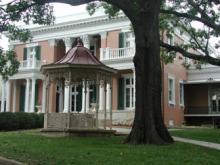Brown V. Board Of Education National Historic Site

The U.S. Supreme Court decision in Brown v. Board of Education (1954) is one of the most pivotal opinions ever rendered by that body. This landmark decision highlights the U.S. Supreme Court’s role in affecting changes in national and social policy. Often when people think of the case, they remember a little girl whose parents sued so that she could attend an all-white school in her neighborhood. In reality, the story of Brown v. Board is far more complex. In December, 1952, the U.S. Supreme Court had on its docket cases from Kansas, Delaware, the District of Columbia, South Carolina, and Virginia, all of which challenged the constitutionality of racial segregation in public schools. The U.S. Supreme Court had consolidated these five cases under one name, Oliver Brown et al. v. the Board of Education of Topeka. One of the justices later explained that the U.S. Supreme Court felt it was better to have representative cases from different parts of the country. They decided to put Brown first “so that the whole question would not smack of being a purely Southern one.” This collection of cases was the culmination of years of legal groundwork laid by the National Association for the Advancement of Colored People (NAACP) in its work to end segregation. None of the cases would have been possible without individuals who were courageous enough to take a stand against the segregated system.
Brown v. Board of Education NHS is located in the former Monroe Elementary School, one of four African American elementary schools. The school has recently been rehabilitated to its 1954 appearance. Exhibits include a film about the events that transpired as well as the "Education and Justice" gallery, in which visitors learn more about the people, places and events that shaped the years right before and after the decision. There are several interactive computer stations, as well as short films to learn more about the story.






























